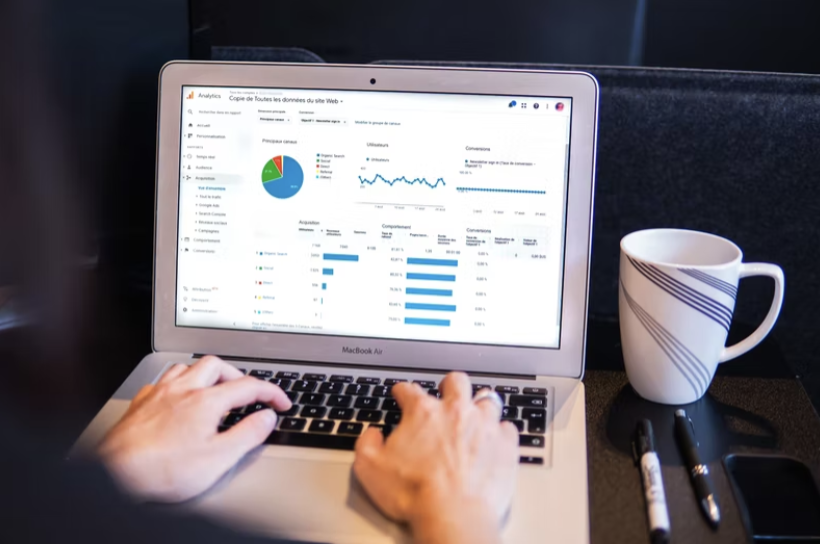Using data analytics effectively in marketing

When it comes to marketing businesses in a digital age; data analytics in marketing is everything. If data isn’t analyzed in the right way, it’s impossible to understand your customers. This means if you can’t understand them, you can’t reach them. So, if data is good, more data must be better, right? Not necessarily. As Rishad Tobaccowala puts it: “We have huge lakes of data that are filled with dead fish”. Whether you’re designing a mailing list or training a neural net, you should never start with data first.
Many businesses gather as much data as they can, pile it all in a database, then start to think of ways to use it. This is akin to buying an encyclopedia and then wondering what to look up in it. As marketers, the first task is to work out what questions we need to ask about the data. This can be much harder than it sounds.
What answers can data analytics provide in marketing?
Remember that data can only ever answer with numbers. For example, it can tell you exactly how many people visited a website in the past month and where they came from – but it lacks any qualitative insight. Marketers, therefore, need to break questions down to a point where they can be answered with numbers alone.

For example, you might be looking to increase traffic to your website. No matter how much data we have, it can’t tell us how to do this. For the marketing function to be effective in analyzing data, it will need to design questions that, once answered, might point out how it can be achieved, such as:
· How many people visited our website last month?
· What demographics do we see the most of?
· Which sites did they arrive from?
· Which web pages are the most visited?
This process of establishing questions needs to happen before the data has even been looked at.
Selecting the data you need
With the list of questions in hand, marketers can start the process of finding some answers. Think about what information you need to know to answer the question. Next look at how you can get it. For instance, if we want to know where website users have arrived from, some form of tracking system will need to be set up. If instead, we wanted to know about the types of products that are often bought together, we could gather the information from our sales database instead.
Quality is important, and you’re often better off getting detailed, relevant information on a targeted audience than casting your net as wide as possible. Customers are often willing to give you their data if they trust you, so you should use this to build up a nuanced picture of your audience. Consider too, what data does google analytics prohibit collecting? What data analytics KPIs do you need?
Insight and creativity – the human element
Once you know how many people use the website, which pages are most popular, where referrals come from, and so on. Now it’s possible to interpret them: Tobaccowala highlights the importance of human insight using what he calls ‘The Four P’s’: Perspective, Provocation, Point of View, and Plan of Action. It’s our job, as humans, to turn the dry data into useful perspectives.
Digital marketing data analytics can tell us that our website is getting a lot of referral traffic from Facebook – our insight is that this may be an area to focus marketing spending on. This insight generates further questions – how much should we spend on Facebook advertising? Which demographics are the best ones to target? Can we produce better content for the platform? Go back to the start and repeat the same steps we’ve just been through until you have specific actions you can take to achieve your overall goal. This process is a crucial cycle in making informed decisions about your marketing strategy.
When data-driven research works in practice
Take the example of Sinan Aral’s work with Jet, an online sales platform. His goal was to improve overall sales. Rather than dive into the data, he came up with specific questions to ask – “which products are often purchased together?”, and “which products are rarely purchased together?”. Simple questions with quantitative answers, which he could answer by turning to sales data. A simple tweak to the ‘suggested products’ algorithm improved the likelihood of displaying shoppers products they’d be interested in purchasing, ultimately improving sales.
This approach is efficient, and cost-effective, and it makes use of marketers’ most important asset; their minds. The cycle of data-driven research delivers consistent results, and allows marketers to demonstrate real value to clients and management:
· Set a high-level goal.
· Identify specific questions with quantitative answers – “how much”, “how many”, “how long”, etc.
· Acquire data that can answer these questions.
· What do these answers tell you? If there are further questions, begin the cycle again.
In the digital age, brands must be able to use data effectively and efficiently to effectively market themselves and increase sales. It’s not just a case of hoarding data, it’s about understanding the questions that your business needs to know the answers to and then heading into the data after.
The role of PR serves an ever-increasingly digital one.
The relationship between PR and clients should be more than just a service provider. A fully optimized PR client relationship is one of fully-fledged strategic oversight, the kind of specialist skills and knowledge that a great PR agency can bring to a business, should never be underestimated.